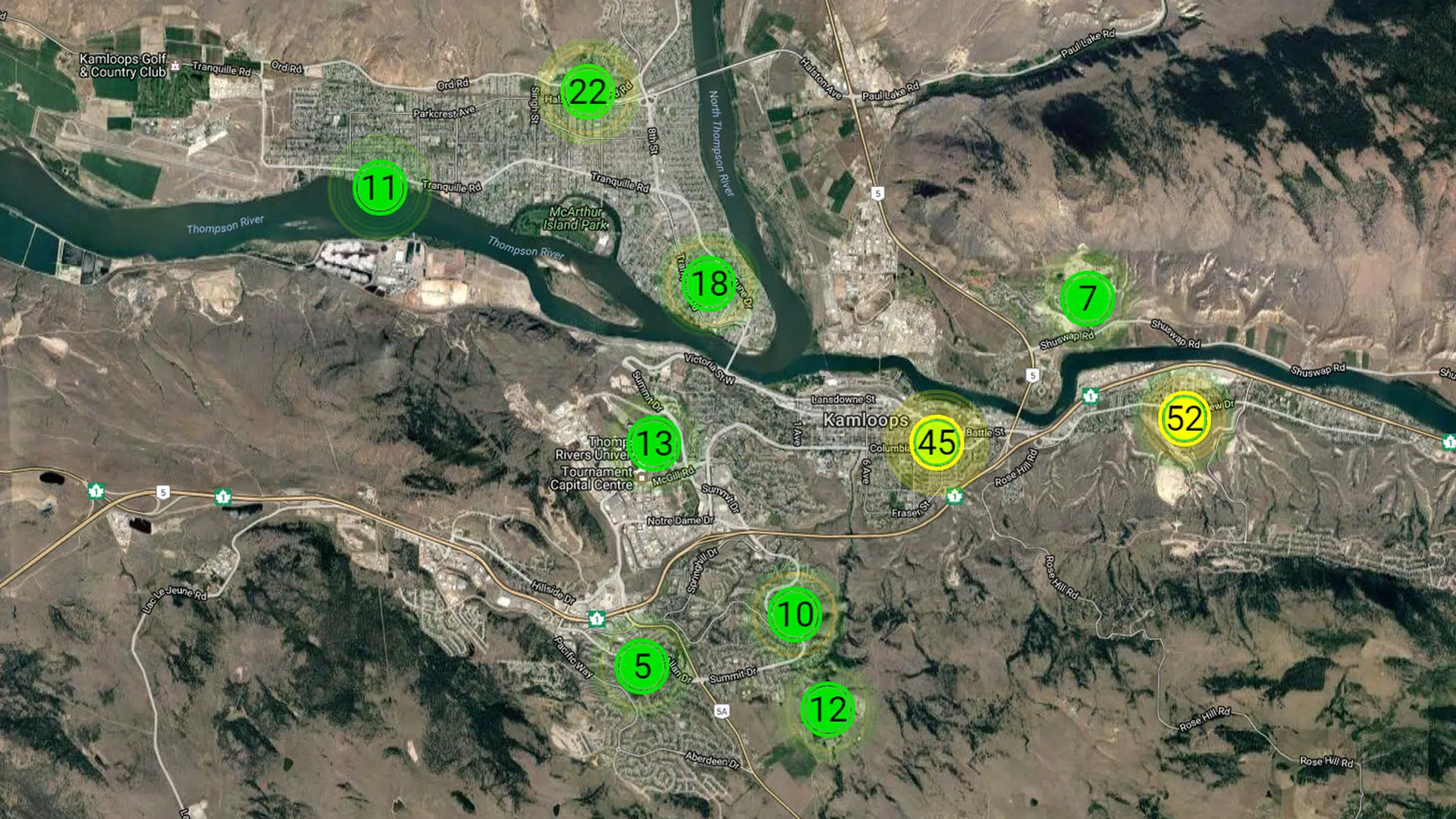
Portable air quality stations yield interesting data
KAMLOOPS — A Thompson Rivers University professor studying air quality in Kamloops says portable air quality stations set up last fall are already yielding interesting results.
Dr. Michael Mehta says the readings shown by his Purple Air monitoring stations set up around the city are very diverse.
Mehta adds that illustrates the provincial government’s method of using only two monitoring stations is inadequate.
“We actually have a very volatile, and constantly changing airshed in this community. It’s not just one airshed either, it’s highly variable depending on where you are. That is quite interesting, because the province’s air quality monitoring approach has been based on putting one or two monitors in a city like this — we have two here currently — and making conclusions about the air quality on an hourly averaging basis.”


